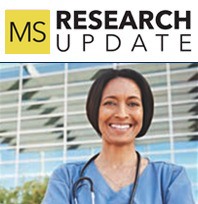Gilenya® (fingolimod)
FDA-Approved Medications: New Data on Previously Approved Medications
Company: Novartis
- 0.5 mg capsule given orally once per day
- Approved in 2010 for RMS
Previous: Tysabri® (natalizumab) | Next: Lemtrada® (alemtuzumab)
Gilenya® (fingolimod) was the first S1Preceptor modulator approved for the treatment of MS. Mayzent® (siponimod), which was approved by the FDA earlier this year for treatment of RMS, secondaryprogressive MS, and clinically isolated syndrome, also belongs to this class of immune-modulatory drugs. Gilenya is similar in structure to a naturally occurring component of cell-surface receptors on white blood cells. (White blood cells are produced by the immune system to fight infection and disease.) Gilenya blocks potentially damaging T cells from leaving lymph nodes, lowering their number in the blood and tissues. It may reduce damage to the CNS and enhance the repair of damaged nerves within the brain and spinal cord.
Recent data suggest that Gilenya has a positive long-term effect on patients with RMS. The Immunomodulation and Multiple Sclerosis Epidemiology Study 2 in Sweden followed 1,617 patients who had received Gilenya for MS. Of that group, 91 percent had RMS, and 70 percent had been treated with interferons, glatiramer acetate, natalizumab, dimethyl fumarate, or teriflunomide before switching to Gilenya. Seventy-six percent (1,230 people) had taken Gilenya for at least one year at study cutoff, and the average treatment duration was 34 months (two months short of three years).
Relapse rates were expressed in “patient years,” a method of calculating study participation over a set period to more accurately measure a medication’s risks and benefits. Based on this calculation, relapse rates fell significantly among Gilenya-treated patients, from 281 per 1,000 patient years before Gilenya treatment to 87 per 1,000 patient years during treatment. However, nearly half the study group (803 patients) discontinued Gilenya at some point, with most patients citing lack of effect or adverse effects as reasons. Still, the researchers viewed Gilenya as ”a generally well-tolerated drug that reduces the clinical activity in MS patients.”12
Meanwhile, LONGTERMS, an open-label, single-arm extension study, evaluated the long-term effects of Gilenya 0.5 mg in people with RMS who had taken the medication for at least five years and who continued to receive it for up to 10 years. The annualized relapse rate (ARR) in this study declined with longer use of Gilenya, from 0.26 after one year of use to 0.14 after 10 years. Seventy-eight percent of participants remained free of confirmed sixmonth disability progression through five years of treatment. Changes in brain volume remained stable for five years and 10 years after Gilenya initiation.37
In a retrospective claims database analysis in the United States, investigators followed 1,599 people with MS for three years after they started Gilenya. Annualized relapse rates were calculated over one year before patients started the medication, and during each year of the three-year follow-up period. Among the Gilenya initiators, 1,158 (72 percent) were still taking the medication at the start of Year 2, and 937 (59 percent) were still on Gilenya at Year 3. Median time on Gilenya treatment was 33 months.
The mean baseline ARR of 0.51 recorded during the pre-initiation period fell more than 50 percent after Gilenya initiation, and that reduction was sustained over three years for the individuals who were still taking Gilenya.38
Previous: Tysabri® (natalizumab) | Next: Lemtrada® (alemtuzumab)

